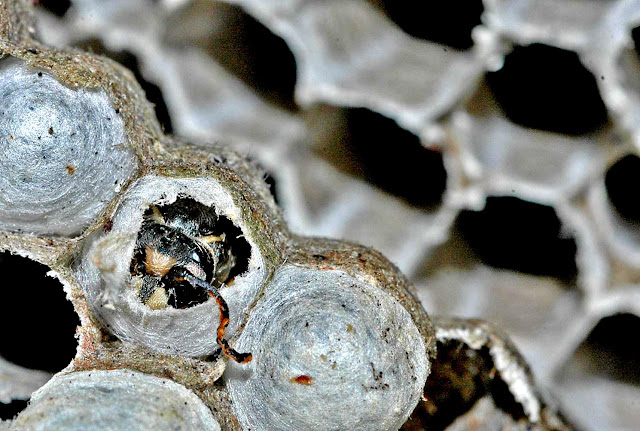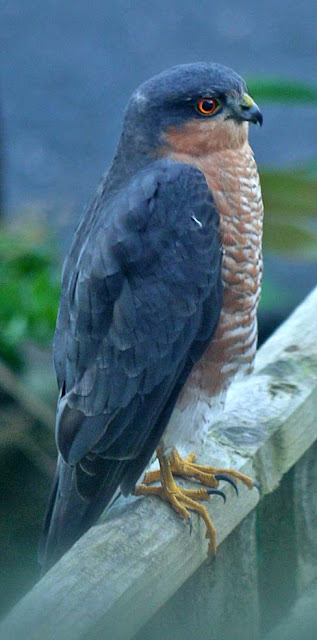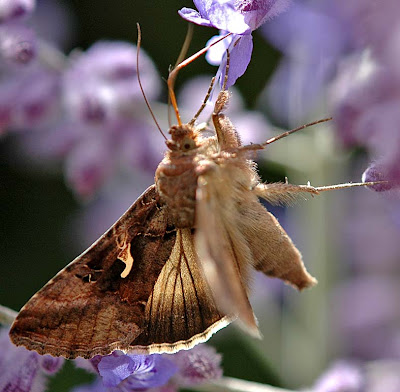Wednesday, October 31, 2012
Waiting for the tide to turn ......
Every walk in the countryside or along the coastline has its own natural soundtrack and the calls of redshanks, which you can listen to by clicking here, are the wild music accompanying visits to most seashores. They're sounds that evoke images of waves lapping over seaweed-covered rocks with long-filled waders probing for worms in the soft sediments that accumulate between them.
When the tide rises redshanks are driven up the shore and one of the best places to watch them locally at close quarters is at the mouth of the river Tyne, where they flock on the north pier below Tynemouth Priory and wait for the tide to turn.
The quotations under the pictures below are taken from the 1891 edition of Rev. F.O. Morris's A History of British Birds, first published in instalments from 1850 onwards. The text that accompanies the beautiful colour plates in these books is often dull description, but it's also peppered with anecdotes gleaned from fellow clergyman-naturalists and sometimes includes the author's own acute observations.
You can read a biography of Morris, who was a vigorous opponent of cruelty to animals in general and fox hunting in particular, here, here and here. In some other respects, especially in his anti-Darwinist stance and his attitudes towards women which would today be deplored but neither of which were unusual in Victorian England, he would be a rather unattractive character, if judged in hindsight and according to enlightened modern attitudes.
Here is what he had to say about the sounds of redshanks on the seashore:
'The call note of the redshank ... is loud and clear, merry and not unmusical, and also at times is plaintive and garrulous, and ordinarily more clamorous and as if scolding.'
'....... if approached unawares, they utter a wild scream of alarm...'
The birds in the first four pictures below were photographed recently on the north pier, where they seem quite accustomed to passers-by so there were no 'wild screams of alarm.'
The bird in the bottom three pictures, in summer plumage, was photographed at Low Hauxley Nature Reserve, near Druridge bay on the Northumberland coast.
The quotations in italics below are all from Morris's A History of British Birds'.
'When the tide is at its height they assemble in flocks on the uncovered places, but immediately that its fall permits their return to their feeding places they disperse in quest of prey'.
'In the winter they frequent the sea shore, delighting in the sandy or muddy flats which are in many places left uncovered by the falling tide; and in the spring they repair to fenny places and marshes, and the borders of lakes, ponds and pools'.
'It wades, reaching its head down under water at full length'
'They can swim well, if necessitated to do so...'.
Labels:
Redshank,
Rev. F.O.Morris,
Tringa totanus
Wednesday, October 24, 2012
Paper engineering
Today's Guardian Country Diary describes an exploration of the nest that tree wasps built in our garden hedge.
Tree wasps Dolichovespula sylvestris have this distinctive little black spot in the centre of the clypeus (the central frontal facial plate), and a fine pair of jaws for catching prey and .........
... chewing fibres of rotten wood .
I suspect the wasp in this image is Vespula vulgaris.
They carry a ball of fibes away in their jaws and mix it with saliva.
These three pictures show a red wasp Vespula rufa chewing fibes from a picnic table.
They use this material to build paper nests of exquisite beauty, lightness and remarkable strength. The queen, emerging from hibernation, starts the nest by building a downward-facing dome attached to a twig with a few breeding cells inside, where ....
.... she lays her first eggs that hatch into grubs, which she feeds with insect food until they hatch as adults.
Then these ever-growing ranks of workers construct the nest around her, enclosing tiers of breeding cells, with just a small entrance hole. Each strip of different coloured paper represents the work of a single wasp, with it's own predilection for the colour and source of wood fibres or hairs that it shaves from the surface of plants. The green patches on the nest above are constructed from hairs from the young twigs of the weeping pear tree in our garden.
This is this year's completed tree wasp nest, excised from the hedge after the wasps have abandoned it. As the nest grows it incorporates surrounding twigs, so the whole structure is very light and remarkably strong, considering the fragility of the components.
The view from underneath, where you can see how the exterior is constructed from successive paper layers ..
The entrance hole, a busy thoroughfare at the height of summer.
This year's nest had some red stripes in it, which I'm pretty sure came from the bark of a dead branch of a cypress tree in the garden.
One dead wasp guarded the entrance when I began to dissect the abandoned nest ....
....revealing the tiers of hexagonal breeding chambers inside ....
... and the multi- layered outer wall. When outdoor clothing companies advertise their cleverly designed products with layered insulation, remember that wasps invented this form of insulation millions of years ago!
These breeding chambers are built with astonishing precision by wasps working in total darkness, using wood fibre glued with saliva. Presumably they use the initial cells, built by the queen in daylight, as their template. Many of the cells on this nest contained grubs that died during development...... you can see one top centre in the above image.
The grub weaves a white domed covering, that's opened by workers that come to feed it with chewed insects - and receive a sugary secretion that acts as their food in return for their efforts. This mutual dependence of grubs and adults ensures social cohesion in the colony.
The cells with the tattered white edges were homes to wasp grubs that developed successfully and chewed their way out at maturity.
Near the bottom of the nest I found these cells with dead grubs still sealed inside, almost on the point of hatching. One adult had begun to chew its way through the shroud but died in the attempt, never experiencing life beyond the darkness inside the nest.
So near, yet so far .....
All the wasp-related info on this blog is collected here
Sunday, October 21, 2012
Mellow yellow
Yellow brain fungus Tremella mesenterica, growing on a dead branch of a large Cotoneaster in Kirkby Stephen in Cumbria. This fungus didn't kill the branch; it's a parasite on another fungus in the genus Peronospora, which had already killed the branch. The fungus is paler when young, but matures to this vibrant shade of chrome yellow.
This aspen Populus tremula, growing in upper Swaledale in North Yorkshire, is the brightest tree in the local landscape at present, beating strong competition from birches and rowans. Aspen leaf stalks are laterally flattened so each leaf flutters from side to side in the slightest breeze and the whole tree seems to shimmer.
Pictures of the winter buds of aspen here and of the fungus that attacks its leaves here.
Saturday, October 13, 2012
Talon contest winner...?
Now that autumn is well under way and there's frost on the roof every morning there has been an influx of small birds into the garden - various tits, goldfinches, greenfinches and the like. So this afternoon I cleaned the bird tables and feeders and bought some wild bird food, in preparation for the winter garden bird season.
It turns out that I wasn't the only one anticipating the arrivals on the bird table.....
This beautiful visitor from higher up the food chain appeared on the garden fence.
I've never really had a good look at a sparrowhawk's talons before, but take a look at that amazing extended middle toe.
When I was at school I had a chemistry master who had an index finger like that, which he used to single out hapless pupils that he fired questions at....
Labels:
sparrowhawk
Wednesday, October 10, 2012
Come dancing ...
A perfect autumn afternoon: no wind, crunchy fallen leaves underfoot, the smell of warm earth and these dancing swarms of midges, constantly shape-shifting as they rise and fall in a sunbeam.
You can see images of the aquatic stages of their life cycle by clicking here and more midges by clicking here
Labels:
Chironomus,
Midges
Monday, October 8, 2012
Silver Y
This hasn't been a particularly good year for the silver Y moth Autographa gamma numbers in my part of County Durham. In some years many thousands migrate here from the Mediterranean early in the year and by now, after several generations of breeding, the Michaelmas daisies and Buddleia x weyeriana in the garden would be smothered in them. It's only now that a few are appearing on a daily basis, just as the frosts begin. The cool, wet summer may be to blame.
Silver Y moths are restless insects, never coming to rest while they feed, so it can be difficult to appreciate the beauty of their mottled wings. But after a cold night they are more accommodating, resting head downwards, waiting for the sun to warm them up. Today Martin Wainwright, over at Martin's Moths, has some fascinating information on the way that moths go through their pre-flight warm-up routine.
We found this silver Y early yesterday morning on a dry stone wall high in the Pennines, 400 metres asl on Chapel Fell where the grass was still covered with frost. The mottled wings provide excellent camouflage on a lichen-covered rock and my wife only spotted it because it had begun to shiver, as part of its warm-up.
When we got home we found another that had spent the night on our window, probably attracted to the room light last night and again resting head down. No effective camouflage this time, but from this angle the irregular outline of the dorsal side of the body is evident - all part of the crypsis in profile as well as plan view if the moths land on a suitably matching background.
In a good year there would be vast numbers of silver Y moths on the wing now and Africa Gomez, over at her excellent BugBlog, describes how it has recently been discovered that they are capable of migrating south, all the way to the Mediterranean with a favourable wind, to escape our winters which would kill almost all of them.
You can find another picture of a silver Y feeding here
Labels:
Autographa gamma,
crypsis,
migration,
Moths,
silver Y moth
Wednesday, October 3, 2012
Seeking Shelter ....
Now that the nights of growing colder a steady trickle of refugees are finding their way into the house from the garden. This female earwig is the latest arrival.
For more earwigs, click here
Earwigs very rarely unpack their elaborate fan-shaped wings and fly but when they do they are truly beautiful - take a look at this link!
For more earwigs, click here
Earwigs very rarely unpack their elaborate fan-shaped wings and fly but when they do they are truly beautiful - take a look at this link!
Labels:
earwig,
Forficula auricularia
Subscribe to:
Posts (Atom)





.jpg)
.jpg)



















































